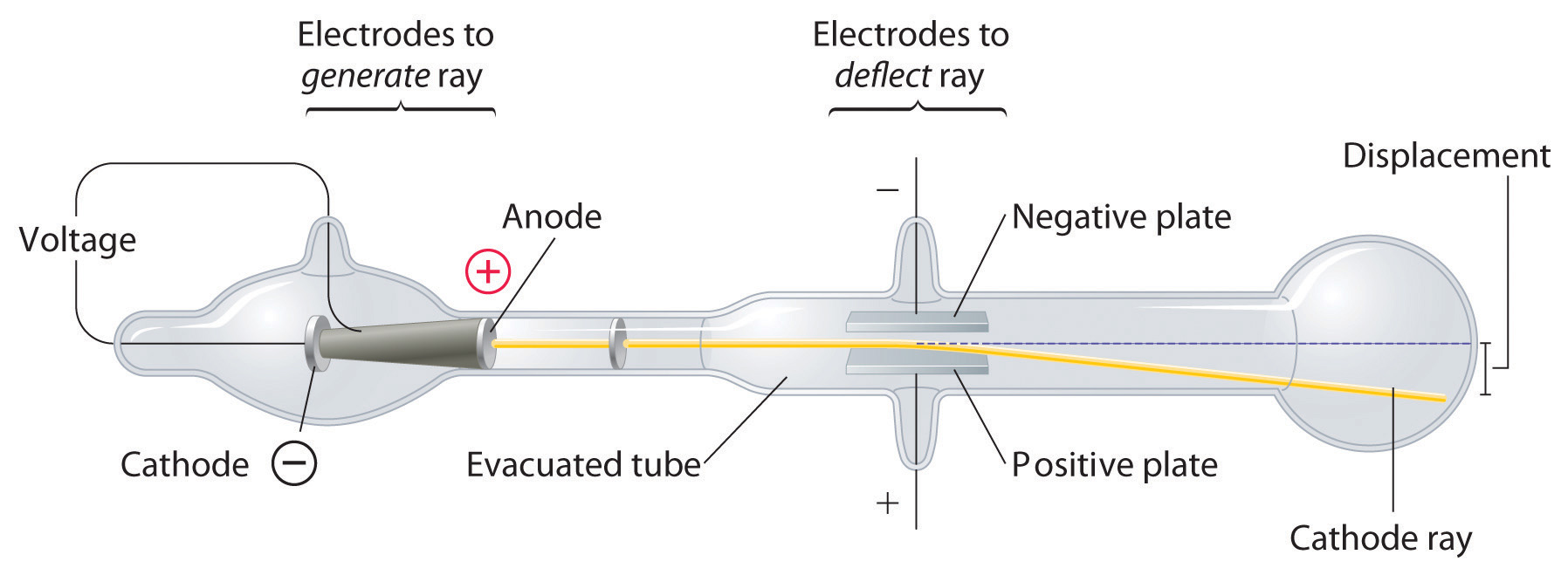

Marie Curie coined the term radioactivity (from the Latin radius, meaning “ray”) to describe the emission of energy rays by matter. Becquerel’s work was greatly extended by Marie Curie (1867–1934) and her husband, Pierre (1854–1906) all three shared the Nobel Prize in Physics in 1903. The second line of investigation began in 1896, when the French physicist Henri Becquerel (1852–1908) discovered that certain minerals, such as uranium salts, emitted a new form of energy. Some of these fast-moving electrons crash into the gas inside the tube, causing it to glow, which allows us to see the path of the beam. With this information and Thomson’s mass-to-charge ratio, Millikan determined the mass of an electron: In the cathode ray tube, electrons are ejected from the cathode and accelerated through a voltage, gaining some 600 km/s for every volt they are accelerated through. He directed the cathode rays between two parallel aluminum plates to the end of a tube where.
Cathode ray experiment diagram series#
Subsequently, the American scientist Robert Millikan (1868–1953) carried out a series of experiments using electrically charged oil droplets, which allowed him to calculate the charge on a single electron. Thomson repeated Hertzs experiment with a better vacuum in 1897. Another set of electrode plates deflect the ray, with the ray bending towards the positive plate. Schematic of cathode ray tube with deflection.

Image used with Permission (CC BY-SA-NC). This cylinder had two slits in it, leading. His first experiment was to build a cathode ray tube with a metal cylinder on the end. As the cathode rays travel toward the right, they are deflected toward the positive electrode (+), demonstrating that they are negatively charged. Thomson had an inkling that the ‘rays’ emitted from the electron gun were inseparable from the latent charge, and decided to try and prove this by using a magnetic field. Suno which is nothing but charge by mass ratio ok if any gas write another modified so it will look something like this steam vacuum pump Bihar ok and what will do just somewhat theĪge of the read and write team we have the induction Koi enquiry properly on the temperature document in here is similar to the first one is 10000 V only at a pressure through the vacuum pump is maintained 3 only which is nothing but 0.\): Deflection of Cathode Rays by an Electric Field. To get this in another experiment but before that here we can see that the cathode rays will be directed towards the positive plate which means that is it is negative in nature is an extension of does not depend for those of the cathedral and we have a ratio of the girls of cathode ray which electron for any gas for any gas


Vocabularies are produced but I just make a change I just put the yah positive plate here and I'll just make and negative pressure right so that I can just make everything clear in this particular diagram only so when an electric discharge of 10000 V is passed through a gas which is a very low pressure what happened cathode rays are produced right now cathode rays Khodiyar which because of the positive plate that we have collected here This fluorescence is the result of rays emitted from the cathode (negative plate) towards the anode (positive plate) in the discharge tube. The study of atomic structure and sub-atomic particles was initiated by the discovery of the discharge tube. Proper illustrated diagram but I just get a peek of it body yeah so this is a cube and the electrons and then electron are joined with induction coil coil that we have it and yeah something like this and then this one is negative this one is positive right and voltage battery we are supposed to provide to the tube is 10000 V right and this is the vacuum pump I know that is applied here for maintaining the pressure of thisīody let you right and then have the pressure inside the tube which is maintained cal 0.01 mm of HG and report is that I've already told it is 10,000 that we apply this is cathode and this is our annual function so then when in electric discharge of organ V right which is that this is something that we have taken here is passed through a very low pressure is very low and gas right when electric discharge of 10000 Rupees is passed through a gas at low pressure pressure is very low what happened cathode rays are produced Hello everyone welcome to the question is in the discharge tube quiet and we have been noticed that what are the things that we need to acquire in the discharge to when you are trying to get the anode rays right in the cathode ray in Orissa stew that we have been given to understand this question more train understand how it can be discharged you look like and what is what are you function ok try and make a cathode ray discharge to so cathode ray discharge tube look something like this so it is all very well


 0 kommentar(er)
0 kommentar(er)
